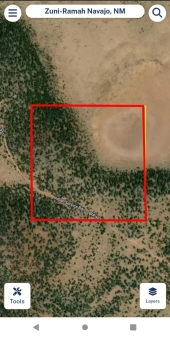
 5
5




![Filename: Las-Tusas-Ranch-ancient-swale-east-side-north-facing-hill-Sept-28th-2018.jpg
Description: [Thumbnail for Las-Tusas-Ranch-ancient-swale-east-side-north-facing-hill-Sept-28th-2018.jpg]](/t/93150/a/65596/Las-Tusas-Ranch-ancient-swale-east-side-north-facing-hill-Sept-28th-2018.jpg)
"People get out your way, when you're on fire". Richard Prior

 6
6




List of Bryant RedHawk's Epic Soil Series Threads We love visitors, that's why we live in a secluded cabin deep in the woods. "Buzzard's Roost (Asnikiye Heca) Farm." Promoting permaculture to save our planet.
 3
3




"People get out your way, when you're on fire". Richard Prior
















List of Bryant RedHawk's Epic Soil Series Threads We love visitors, that's why we live in a secluded cabin deep in the woods. "Buzzard's Roost (Asnikiye Heca) Farm." Promoting permaculture to save our planet.
 2
2




Iterations are fine, we don't have to be perfect
My 2nd Location:Florida HardinessZone:10 AHS:10 GDD:8500 Rainfall:2in/mth winter, 8in/mth summer, Soil:Sand pH8 Flat
 2
2








"People get out your way, when you're on fire". Richard Prior
















List of Bryant RedHawk's Epic Soil Series Threads We love visitors, that's why we live in a secluded cabin deep in the woods. "Buzzard's Roost (Asnikiye Heca) Farm." Promoting permaculture to save our planet.
 2
2




 . The approach that works for us is mow frequently (so weeds/unwanted grasses like fall panicum do not re-seed) and re-seed/over-seed this fall. Over time grasses will out-compete everything else. Grasses are difficult to establish and they are difficult to kill. In between it is pretty simple
. The approach that works for us is mow frequently (so weeds/unwanted grasses like fall panicum do not re-seed) and re-seed/over-seed this fall. Over time grasses will out-compete everything else. Grasses are difficult to establish and they are difficult to kill. In between it is pretty simple  .
.
 2
2




 2
2




 2
2




 2
2








Bless your Family,
Mike
 2
2




![Filename: Permaculture-Big-Book-cover.jpg
Description: [Thumbnail for Permaculture-Big-Book-cover.jpg]](/t/93150/a/66023/Permaculture-Big-Book-cover.jpg)
"People get out your way, when you're on fire". Richard Prior
 2
2









"People get out your way, when you're on fire". Richard Prior




Brian Rodgers wrote:Thank you Oddo Da.
First thing I'll need to do is learn how a seed drill works so I might be able to make an educated guess about buying one. There is very little farming here, it's mostly ranching for cattle or feed for cattle.
Up here in the mountains there is only one tractor and implement source and it is very small. It's basically in a guy's front yard. I'll need to go to bigger areas to search, such as Santa Fe or Albuquerque which is 150 miles away.
I looked at images of Oliver Superior antique seed drill and now I know more than I did before, so I thank you for that.
Brian
 2
2




Oddo Da wrote:It always amazes me how people want to run livestock in areas that cannot really support them.
...
I would just stick to growing native grasses for a bit and then you can always release a cow or two a few years later if your efforts prove to be fruitful and only for pasture improvement - they aren't going to get fed off a small area year round. Having spent time in SW Texas and New Mexico years ago, these ecosystems had been raped by overgrazing and inappropriate cattle introduction to areas where cattle had no business being (on a permanent basis), just like today everyone is growing pecans in areas of New Mexico and Texas where they get 9-12" of rain per year. Astonishing. Don't forget that native wildlife competes for the same space/resources as well - if you want to live in harmony with Nature then this should be a consideration.
Windbreaks and treelines, swales? These areas may not have traditionally had any trees save for some junipers and the same area probably grew native prairie grasses, things like gramma grass just fine. People tend to want to get involved and do all sorts of massive, long lasting and over-reaching things, when all they need to do is small, incremental changes...
 2
2




 1
1




 1
1




Gordon Haverland wrote:Another question, is "who" made the ancient swales?
If some indigenous tribe did this, then they may have data about the why and how they did this.
 2
2








"People get out your way, when you're on fire". Richard Prior




 3
3




 2
2




 1
1




![Filename: Pasture-closeup-unirrigated-pasture-8-10-18.jpg
Description: [Thumbnail for Pasture-closeup-unirrigated-pasture-8-10-18.jpg]](/t/93150/a/66101/Pasture-closeup-unirrigated-pasture-8-10-18.jpg)
![Filename: Forest-Day-Austin-Brians-Buddy-October-8th-2018.jpg
Description: [Thumbnail for Forest-Day-Austin-Brians-Buddy-October-8th-2018.jpg]](/t/93150/a/66106/Forest-Day-Austin-Brians-Buddy-October-8th-2018.jpg)
"People get out your way, when you're on fire". Richard Prior
 2
2











 1
1




 3
3





|
I am going down to the lab. Do NOT let anyone in. Not even this tiny ad:
turnkey permaculture paradise for zero monies
https://permies.com/t/267198/turnkey-permaculture-paradise-monies
|




